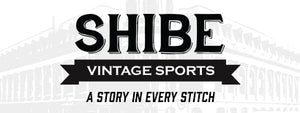May 24, 2011
 On May 24th, 1935, President Roosevelt turned a golden telegraph key. That lit up a signal light on a table at Crosley Field in Cincinnati. Reds GM Larry MacPhail then flipped a switch, and 632 Mazda lamps, 1500 watts each, lit up the night sky. The major leagues kicked off the Age of Light, something some historians say saved the sport in smaller towns.
On May 24th, 1935, President Roosevelt turned a golden telegraph key. That lit up a signal light on a table at Crosley Field in Cincinnati. Reds GM Larry MacPhail then flipped a switch, and 632 Mazda lamps, 1500 watts each, lit up the night sky. The major leagues kicked off the Age of Light, something some historians say saved the sport in smaller towns.
Night baseball was not a new concept. The minor leagues had started hosting night games in the 1920s. The Kansas City Monarchs of the Negro Leagues started barnstorming with lights, carrying lights from venue to venue on the team bus, in 1930. But there were plenty in the Majors who did not want night baseball. Washington Senators owner Clark Griffith famously said, “There is no chance of night baseball ever being popular in the bigger cities. High class baseball cannot be played at night under artificial light.”
But the Great Depression had rocked the Reds, who were floundering the standings and averaging under 2000 fans per game by the mid 1930s. Their owner, Sidney Weil, was on the verge of bankruptcy when the Central Trust Bank took control of the team. Powel Crosley (A humble man who quickly named the stadium after himself) bought the team from the bank in 1934, and signed on Larry MacPhail as his GM. MacPhail had been GM of a minor league team in Columbus, OH, that had installed lights a few years previous and seen their attendance skyrocket during the night games. Crosley, seeing a stadium full of empty seats, didn’t need much convincing to try night games. Conservative baseball Commish, Kenesaw Mountain Landis, was not warm to the idea at first, but Crosley and MacPhail prevailed upon him that without drastic measures, baseball was going to leave the Queen City. Being staunchly against franchise relocation (Not a single team switched cities during Landis’s 22 year reign as commissioner), the Commish conceded to allow the Reds to play 7 experimental games under lights in the 1935 season.
And so, on May 24th, 1935, the 8-17 Phillies came to town to take on the 11-16 Reds. Both teams were on their way to forgettable seasons, finishing 6th and 7th in the National League. But on this night, the two squads were going make history. They were going to play under artificial light.
 The field was made twice as bright as any minor league park. The Reds, who had played an afternoon home game the day before in front of 2,000 fans, were greeted by a cheering throng of 20,000 as they took the field that Wednesday evening. The lights were flipped on, Hall of Fame umpire Bill Klem yelled “Play Ball!” and a new era in baseball history had begun. The Reds won the game, 2-1, but more importantly, night baseball had proved to be both legitimate and successful. There were no errors in the game, proving wrong the naysayers who said that players would lose the ball in the night sky. And the game had proved to a hit with fans and players. Said Reds first baseman Billy Sullivan after the game, “No pun intended, but there was electricity in the air-on the field, in the stands, and in the dugout. Ballplayers did not get blase. They got fired up too.”
The field was made twice as bright as any minor league park. The Reds, who had played an afternoon home game the day before in front of 2,000 fans, were greeted by a cheering throng of 20,000 as they took the field that Wednesday evening. The lights were flipped on, Hall of Fame umpire Bill Klem yelled “Play Ball!” and a new era in baseball history had begun. The Reds won the game, 2-1, but more importantly, night baseball had proved to be both legitimate and successful. There were no errors in the game, proving wrong the naysayers who said that players would lose the ball in the night sky. And the game had proved to a hit with fans and players. Said Reds first baseman Billy Sullivan after the game, “No pun intended, but there was electricity in the air-on the field, in the stands, and in the dugout. Ballplayers did not get blase. They got fired up too.”
Four years later, lights were erected at Shibe, and the Athletics became the first AL team to host a night game. Two weeks later the Phillies, also playing at Shibe, played their first night game. The last non- expansion team to get lights, the Chicago Cubs, finally did so in 1988. Their opponents that day? The Philadelphia Phillies.
Want to learn more about this game? Two great resources for this article were this crosley-field.com site and the book Let their Be Light. Like the story and our site. Please click “Like” below to help us spread the word. Thanks!

